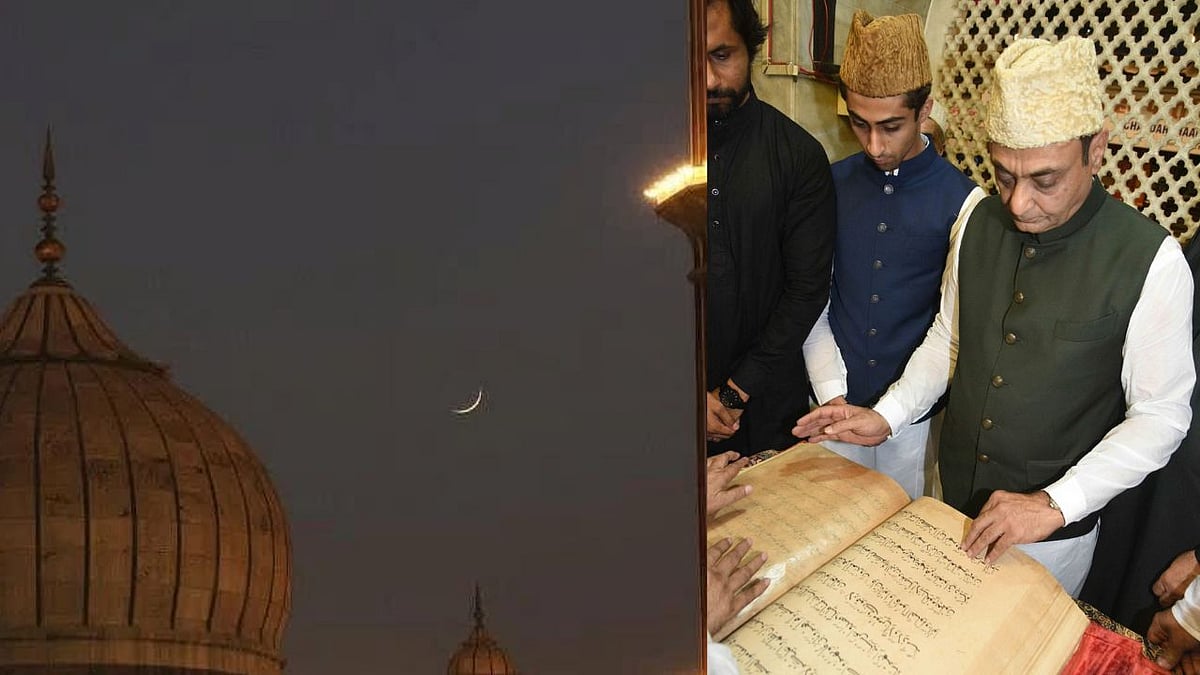Eid-al Fitr 2025: India To Celebrate On March 31 (Left), 600-Year-Old Calligraphed Quran Displayed At Mahim Dargah In Annual Night of Reverence (Right) | X/ @taj_india007, @fpjindia
Eid ul Fitr, or the ‘festival of breaking the fast’ will be celebrated on Monday as the moon has been sighted this evening in many places in India. The Markazi Ruyate Hilal Committee of Masjid-e-Jama, Mumbai, announced the sighting of the moon of the month of Shawwal 1446 on Sunday evening. Many countries in the Middle East like Saudi Arabia celebrated the festival on Sunday after the first crescent moon of the new month was seen there on Saturday evening. Dawoodi Bohras, too, celebrated Eid on Sunday.
Hundreds of devotees gathered at the Mahim dargah on Saturday night for the annual exposition of a 600-year-old Koran that was calligraphed by Hazrat Makhdoom Fakih Ali Mahimi, the saint at the dargah.
The book is displayed to the faithful only for a few hours during one night in the holy month of Ramzan, before it is returned to a silver box in the ‘Ashtana’ or the shrine’s inner sanctum where the saint’s tomb is. People queued up for hours at the shrine for the ritual called ‘Ziyarat of the Koran Sharif’. The book was brought out at 10.30 pm on Saturday and was displayed till 2.15 am on Sunday.
Suhail Khandwani, the managing trustee of Mahim Dargah and Pir Makhdoom Sahib Charitable Trust, said that the pages were probably bound into a volume nearly a century ago. The pages were written by Makhdum Baba one by one and his disciples are believed to have collected the pages separately till it was put together as a book. The saint is believed to have lived between the fourteenth and fifteenth centuries. He was a scholar of the Koran and reports of miracles ascribed to him bring thousands of pilgrims every day to his sea-side shrine. With dimensions of one foot and nine inches, the 300-page book weighs about five kg. Though the book’s pages are well-preserved and the black calligraphy fresh as if it was transcribed just a few decades ago, the dargah has plans to use modern preservation techniques to protect it. “We need to work on microfilming it,” added Khandwani.
